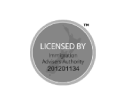New Zealand’s Active Investor Plus Visa (AIP) offers sophisticated investors two distinct pathways to residency: the Growth and Balanced categories. Effective since April 2025, these options cater to different investment philosophies, risk appetites, and lifestyle goals. The Growth category targets high-growth potential investments with a shorter commitment, while the Balanced category emphasizes diversification with flexible residency requirements. Understanding these pathways is essential for globally mobile investors seeking to align their portfolio with long-term family and financial objectives.
Understanding the Growth Category
Designed for investors pursuing aggressive growth, this pathway requires a minimum investment of NZ$5 million over three years. Investments must target high-growth sectors through New Zealand Trade and Enterprise (NZTE)-approved managed funds or direct investments. The residency obligation is minimal—just 21 days spread over three years—making it ideal for investors maintaining global business activities. This category suits those comfortable with higher risk for potentially greater returns, accepting that investments are concentrated in ventures like private equity or venture capital. After fulfilling requirements, investors gain a pathway to permanent residency.
Exploring the Balanced Category
This pathway demands a higher commitment—NZ$10 million over five years—but offers greater flexibility. Investors can diversify across multiple asset classes, including:
- Bonds and listed equities for stability
- Property development (residential/commercial)
- Philanthropic contributions
- Growth-type investments for portfolio enhancement
A unique advantage is the residency flexibility: The standard requirement of 105 days over five years can be reduced to 63 days by increasing Growth-type investments to NZ$13 million+. This “reduction ladder” (e.g., NZ$11M → 91 days; NZ$12M → 77 days) accommodates investors with extensive global commitments. The Balanced approach supports family inclusion and provides a clearer route to citizenship after five years.
Growth vs. Balanced: Critical Comparison
| Factor | Growth Category | Balanced Category |
|---|---|---|
| Minimum Investment | NZ$5 million | NZ$10 million |
| Investment Term | 3 years | 5 years |
| Residency Days | 21 days over 3 years | 63–105 days over 5 years |
| Risk Profile | Higher risk/return | Moderate, diversified |
| Key Assets | Venture capital, private equity | Bonds, equities, property, philanthropy |
| PR Pathway | After 3 years | After 5 years |
Strategic Considerations for Investors
Risk Tolerance dictates choice: Growth investors prioritize capital appreciation despite volatility, while Balanced investors hedge across asset classes. Liquidity needs also matter—Growth assets are less liquid, whereas Balanced allows easier portfolio adjustments through listed securities.
Residency flexibility is pivotal. The Balanced category’s reducible stay benefits jet-setting executives, while Growth’s shorter term appeals to those seeking quicker outcomes. Family priorities influence decisions too: Both pathways enable family relocation, but Balanced’s longer horizon better supports multi-generational planning.
Crucially, alignment with investment expertise matters. Growth demands active engagement with startups/VC, while Balanced accommodates passive strategies through bonds or equities.
Conclusion
The Growth and Balanced categories represent divergent philosophies within New Zealand’s investor visa framework. Growth offers accelerated timelines and growth-focused portfolios for tactically agile investors. Balanced provides structured diversification and adaptable residency for those prioritizing stability and family transition. Both pathways unlock New Zealand’s renowned lifestyle and educational ecosystem, but the optimal choice hinges on individual risk calculus, global mobility needs, and intergenerational objectives. Consulting specialized immigration advisors is advised to navigate compliance nuances and investment validation.










